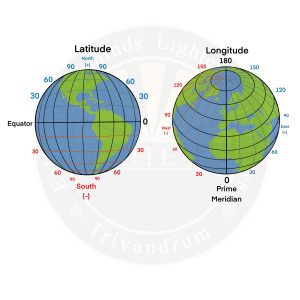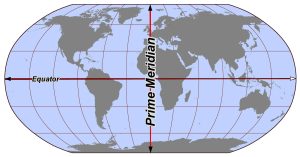Latitudes
- What is it?: The Parallel of Latitudes extends from the Equator to 90 degrees North Pole and 90 degrees South Pole.
- They are mainly the east-west circles that connect all the locations of the Earth.
- The distance between two parallel latitudes is 111km.
- All the latitudes are parallel to the Equator.
- Major Parallels of Latitudes
- Equator
- The Equator is the imaginary line that divides the earth into two hemispheres – north and south.
- It is the longest line of latitude.
- Arctic Circle
- Arctic Circle is the Northernmost circle which is at 66 and 1/2 degrees north of the Equator.
- The position of the Arctic is not always fixed.
- Antarctic Circle
- Antarctic Circle is the Southernmost circle which is at 66 and a 1/2 degrees south of the Equator.
- The Antarctic Circle is also shifting southward.
- Tropic of Cancer
- The Sun is directly overhead at this position in June.
- The Tropic of Cancer is located at 23 and 1/2 degrees in the Northern Hemisphere.
- Tropic of Capricorn
- It is currently at 23 and a 1/2 degree south.
- The sun is overhead once a year in December and therefore experiences the maximum heat then.
- Equator

Longitudes
- Longitude is the east-west measurement of the prime meridian.
Prime Meridian
Pic Credit – Wikimedia Commons |

